Tracking Animals
7 April 2016 - 12 February 2017
Hunterian Museum
Admission free
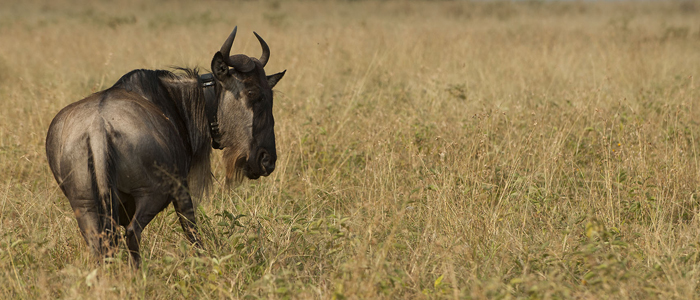
Introduction
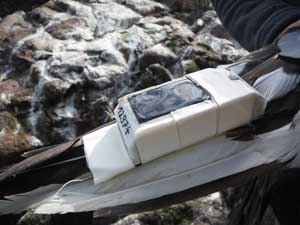 The Hunterian Science Showcase presents new and ongoing research in movement ecology and bio-logging from the Institute of Biodiversity, Animal Health and Comparative Medicine (IBAHCM) at the University of Glasgow.
The Hunterian Science Showcase presents new and ongoing research in movement ecology and bio-logging from the Institute of Biodiversity, Animal Health and Comparative Medicine (IBAHCM) at the University of Glasgow.
Using satellites, drones and mobile phone technology, coupled with lightweight tracking devices, researchers can remotely and precisely monitor and record the movement and behaviour of animal populations and individuals. In contrast to previous generations of researchers who were often restricted to the observing or filming of animal behaviour, new tracking technologies allow data to be gathered and transmitted remotely.
Featured objects include tracking devices used by Dr Grant Hopcraft in his studies of Serengeti wildebeest and zebra migration and by Dr Jana W. E. Jeglinski in her studies of the movements of juvenile gannet populations. Also exhibited is footage by Grant and Jana, accompanied by films showing Dr Shaun Killen's research on fish movement in the laboratory and in the wild using swim tunnels, acoustic tags and stereo cameras.
Institute of Biodiversity, Animal Health and Comparative Medicine.
Text Messages from Teenage Gannets
 "Seabirds such as gannets make a crucial decision during their immature or "teenage" phase: where to breed. I study the prospecting movements of immature Northern gannets in several colonies in Germany, France and the UK. I want to understand how different gannet colonies are connected to each other through this flow of young birds inspecting potential nesting sites and looking for a mate, and what drives the decision of immature gannets to visit some colonies but not others.
"Seabirds such as gannets make a crucial decision during their immature or "teenage" phase: where to breed. I study the prospecting movements of immature Northern gannets in several colonies in Germany, France and the UK. I want to understand how different gannet colonies are connected to each other through this flow of young birds inspecting potential nesting sites and looking for a mate, and what drives the decision of immature gannets to visit some colonies but not others.
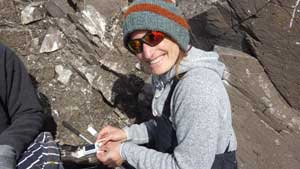
Dr Jana W. E. Jeglinski, IBAHCM, University of Glasgow.
The Diary of a Migrating Wildebeest
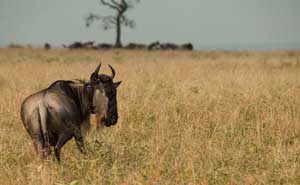 "I use GPS radio collars and Unmanned Aerial Vehicles (UAVs or, more commonly, drones) to track the migratory patterns and behaviours of wildebeest in the Serengeti National Park in Tanzania. Drone film footage allows us to track individual animals as they move, and study and understand interactions within the wildebeest population.
"I use GPS radio collars and Unmanned Aerial Vehicles (UAVs or, more commonly, drones) to track the migratory patterns and behaviours of wildebeest in the Serengeti National Park in Tanzania. Drone film footage allows us to track individual animals as they move, and study and understand interactions within the wildebeest population.
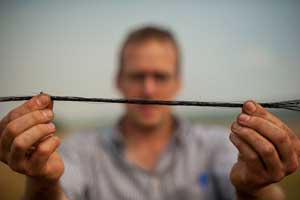 Radio collars generate spatial data that help us understand decision-making in grazing and migration strategies by different species, and help us locate individual animals again. We take hair samples from the same individual wildebeests, which tell us what they have been eating and drinking, and how they have been behaving: a physiological diary of a migrating wildebeest. With my colleagues I have developed a smart phone app called Serengeti Tracker, which provides real-time locations of radio-collared wildebeest and zebras."
Radio collars generate spatial data that help us understand decision-making in grazing and migration strategies by different species, and help us locate individual animals again. We take hair samples from the same individual wildebeests, which tell us what they have been eating and drinking, and how they have been behaving: a physiological diary of a migrating wildebeest. With my colleagues I have developed a smart phone app called Serengeti Tracker, which provides real-time locations of radio-collared wildebeest and zebras."
Dr Grant Hopcraft, IBAHCM, University of Glasgow.
Following Fish in Stereo
 "Our research focuses on how links between physiology and behaviour influence how fish find food, avoid predators, and respond to environmental change. In tanks and swim tunnels in the laboratory we measure different types of animal behaviour: for example, how active they are or how fast they move. We use specialised software and a stereo camera set-up to automatically track the movements of fish in response to different variables. This automated tracking can provide insights into the behaviour of animals that would be difficult to detect with the naked eye.
"Our research focuses on how links between physiology and behaviour influence how fish find food, avoid predators, and respond to environmental change. In tanks and swim tunnels in the laboratory we measure different types of animal behaviour: for example, how active they are or how fast they move. We use specialised software and a stereo camera set-up to automatically track the movements of fish in response to different variables. This automated tracking can provide insights into the behaviour of animals that would be difficult to detect with the naked eye.
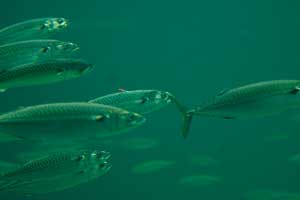 We also work in the natural environment to track the movements of wild fish. This is done by attaching a tag to the fish which transmits an acoustic signal. This signal is then picked up by receivers that are deployed within a water body, allowing us to triangulate the position of the fish and reconstruct its movement path. Using this technology we can study many different aspects of fish biology including habitat preferences of species and their responses to temperature variation."
We also work in the natural environment to track the movements of wild fish. This is done by attaching a tag to the fish which transmits an acoustic signal. This signal is then picked up by receivers that are deployed within a water body, allowing us to triangulate the position of the fish and reconstruct its movement path. Using this technology we can study many different aspects of fish biology including habitat preferences of species and their responses to temperature variation."
Dr Shaun Killen, IBAHCM, University of Glasgow.

